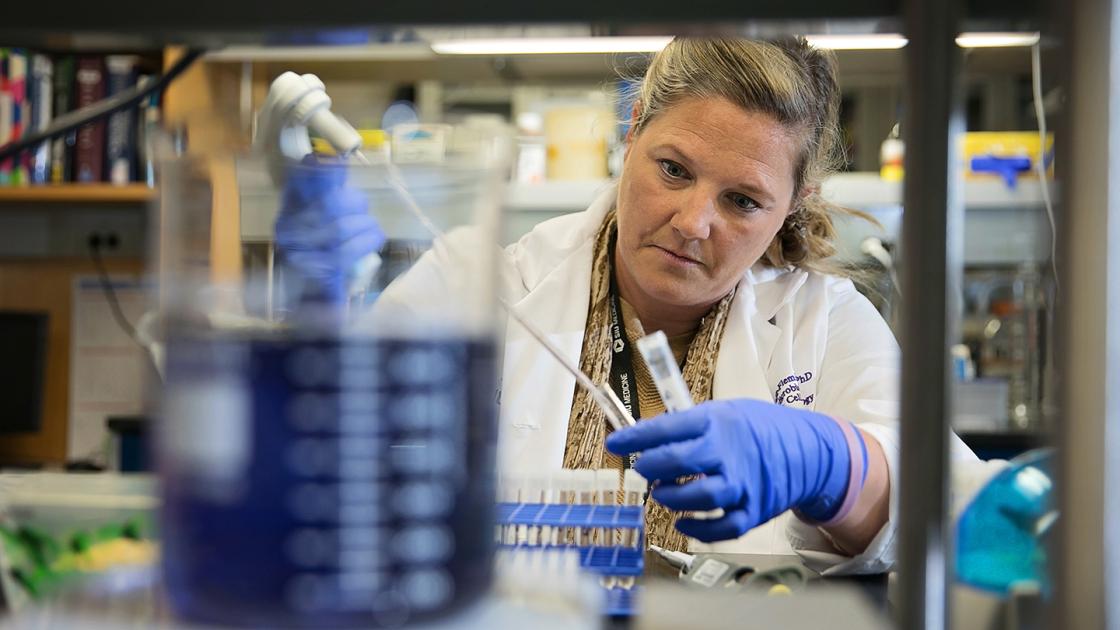Endometriosis
Overview
Endometriosis is a condition in which tissue that normally lines the uterus grows outside the uterus. Menstrual pain and irregularity are the most common symptoms.
If you have endometriosis, endometrial tissue grows outside the uterus in the pelvic cavity. During your menstrual cycle, this extra tissue swells with blood along with the normal tissue in your uterus. The tissue may also release tiny drops of blood. The swelling and blood irritate nearby tissues, causing pain and cramps. Constant irritation may cause scar tissue to form. This scar tissue can bind organs together and cause trouble getting pregnant (infertility).
Stages
The stages of endometriosis are ranked as follows: Minimal (I), Mild (II), Moderate (III), or Severe (IV). Staging depends on certain factors. These include the number, size, and site of the implants. The stage also depends on the extent of the adhesions and whether other pelvic organs are involved. The severity of your disease may not match the pain you feel. Even mild endometriosis can cause a lot of pain.
Endometriosis can be treated with hormone therapy, surgery, or a combination of both. Talk to your health care provider to see which treatment is best for your condition.
Treatments
Hormone therapy
Hormone therapy regulates or blocks the hormones that control your menstrual cycle. This means it can limit the swelling of your endometrium and extra endometrial tissue (implants). This treatment may be used before, instead of, or after surgery.
Surgery
Surgery can be used to remove implants of endometrial tissue or for removal of the reproductive organs.
-
With laparoscopy a laparoscope (a thin, lighted tube) is inserted through a small incision in your abdomen. Your doctor uses the laparoscope and another small instrument to remove the implants.
-
Surgical removal of the tissue may be required to relieve severe symptoms or to allow impregnation. Tissue may be destroyed by heat (electrocautery) or removed with lasers during laparoscopy (usually done on an outpatient basis under local anesthesia).
-
Laparotomy is open surgery to remove large implants that can’t be reached with the laparoscope or when pelvic organs such as your bowel are involved.
-
Hysterectomy is the surgical removal of your uterus. Any implants or adhesions in your pelvic cavity will also be removed.
-
During a Total Hysterectomy with Bilateral Salpingo-Oophorectomy procedure, your uterus, ovaries, and fallopian tubes are removed. Any implants or adhesions in nearby tissue are also removed.
Robotic-assisted surgery
Minimally invasive surgery is known for quick recovery time, shorter hospital stays and small incisions (1-2cm) compared to traditional open surgery. The state-of-art technology is da Vinci surgery which offers patients more opportunities for a faster recovery. The da Vinci robot provides the surgeon the ability to control robotic arms with 360 degrees of mobility, seven degrees of freedom, while looking through a camera with three dimensional and high definition images. This technology allows more procedures to be performed via minimally invasive techniques, so patients experience a quicker recovery, faster return to normal activities, shorter hospital stay, less pain, less scarring, and fewer surgical complications.
Our providers
Why SIU
Continually learning
With a focus on continual improvement, our doctors take the time to research, study and innovate to provide the latest treatments for our patients.
Patient-first experience
Our care ranges from primary care physicians to specialists and sub-specialists who have advanced training. We're here for you when you need us.
Breakthrough tech
Continually teaching the next generation of doctors, our physicians use the latest developments in procedures and technologies for our patients.
Clinical Trials
Latest articles

























